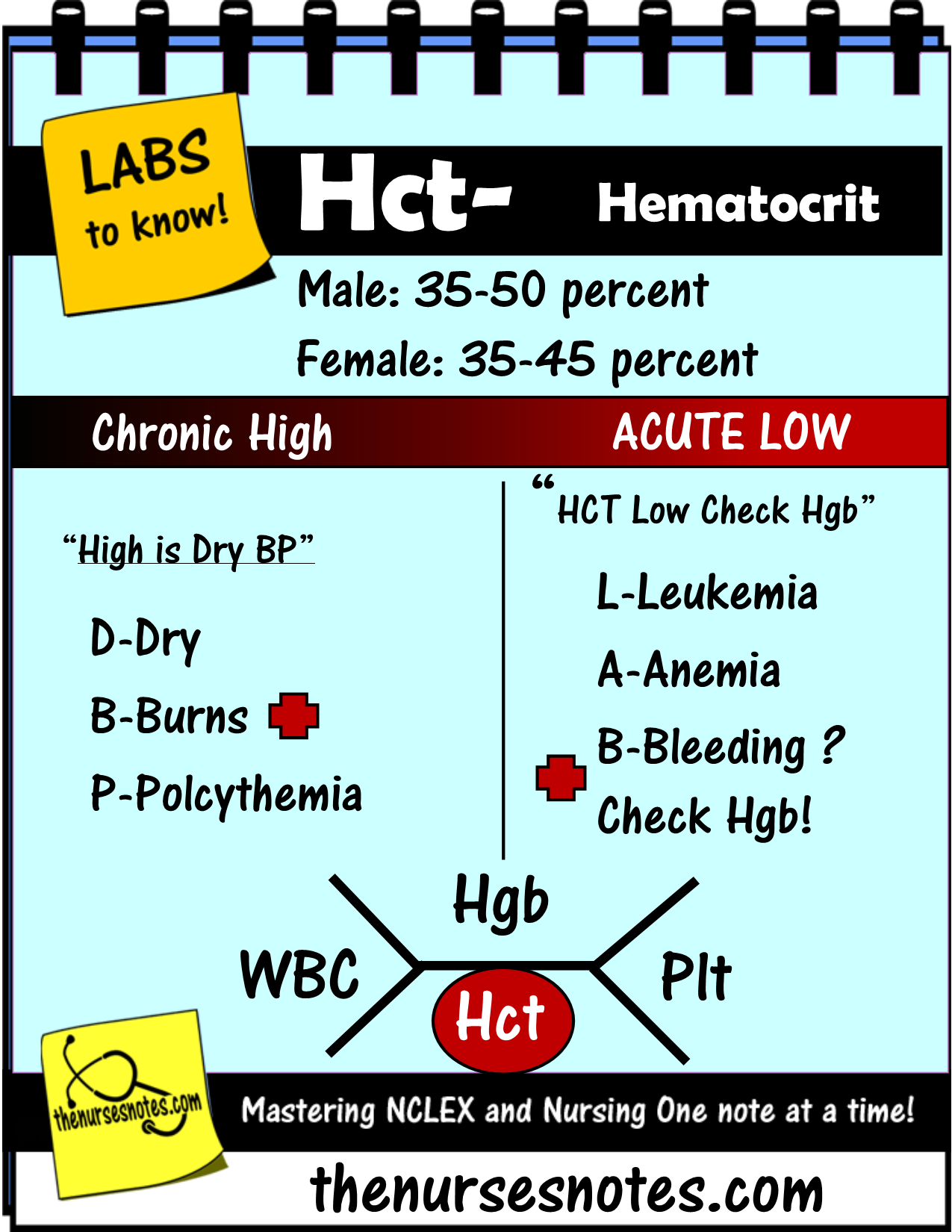What is hct count. Hematocrit (HCT) Count: Understanding Red Blood Cell Volume and Its Significance
What is hematocrit and why is it important. How is hematocrit measured. What are normal hematocrit levels for different age groups and genders. What causes high and low hematocrit levels. How does hematocrit relate to overall health.
What is Hematocrit and Why is it Crucial for Your Health?
Hematocrit (HCT), also known as packed cell volume (PCV) or erythrocyte volume fraction, is a vital measurement in hematology. It represents the volume percentage of red blood cells in your blood. This parameter is crucial for assessing your body’s ability to transport oxygen effectively.
Red blood cells contain hemoglobin, a protein that binds to oxygen and delivers it to various cells throughout your body. As these cells circulate, they pick up oxygen in the lungs and distribute it to tissues that require it for energy production. On their return journey, they collect carbon dioxide for exhalation.
By measuring hematocrit, healthcare professionals can evaluate whether you have an adequate number of red blood cells to meet your body’s oxygen demands. This information is particularly valuable when diagnosing conditions such as anemia (low red blood cell count) or polycythemia (excessive red blood cell production).

Hematocrit Testing Methods: From Manual to Automated Techniques
Over the years, several methods have been developed to measure hematocrit levels. Each technique has its advantages and limitations:
1. Macrohematocrit (Wintrobe) Method
This traditional approach involves:
- Using a narrow glass tube
- Centrifuging the blood sample to separate components
- Manually measuring the length of the red blood cell layer
While effective, this method can overestimate hematocrit due to trapped plasma in the red blood cell layer.
2. Microhematocrit Method
An improvement over the macrohematocrit technique, this method:
- Utilizes a capillary tube
- Requires less blood and processing time
- Provides more accurate results due to reduced plasma trapping
3. Automated Hematology Analyzers
Modern laboratories primarily use automated analyzers, which:
- Calculate hematocrit as part of a complete blood count (CBC)
- Indirectly determine hematocrit based on red blood cell volume and count
- Offer rapid and efficient results
Is manual blood collection still necessary for hematocrit testing? In most cases, automated analyzers require a standard blood draw from the arm or hand. However, the microhematocrit method can be performed using a small finger-prick sample, making it suitable for situations where resources are limited or when testing infants and children.
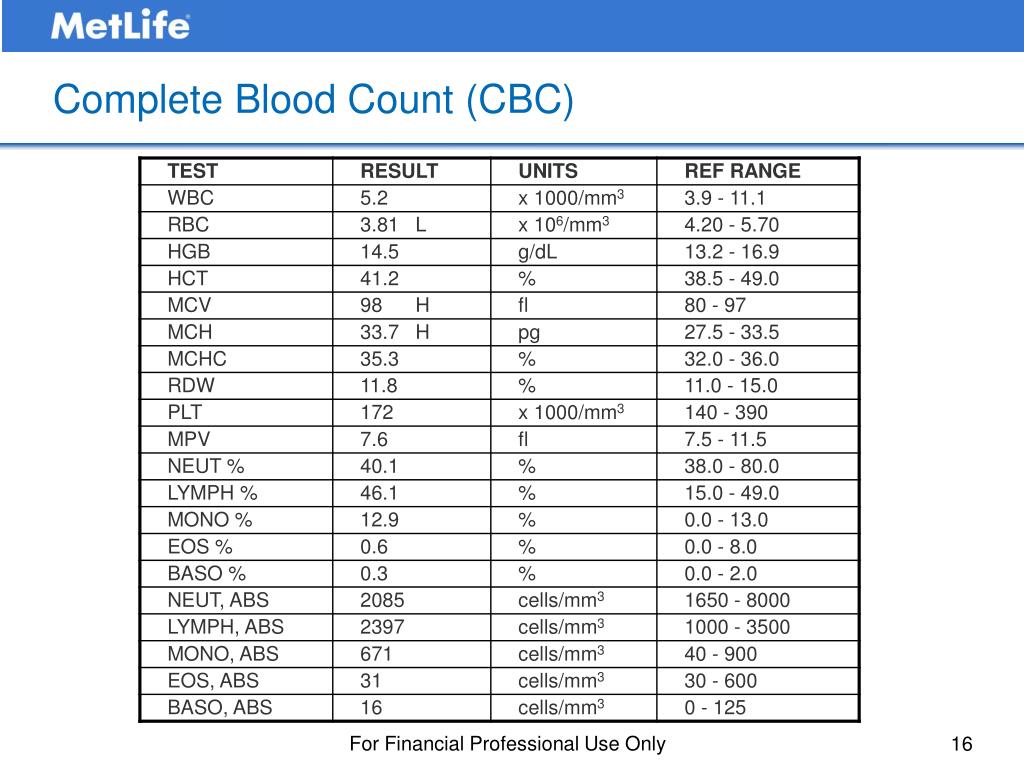
Decoding Hematocrit Levels: What’s Normal and What’s Not?
Hematocrit levels vary based on age and gender. Healthcare providers interpret results within specific ranges:
- Adult males: 41% to 50%
- Adult females: 36% to 44%
- Newborns: 45% to 61%
- Infants: 32% to 42%
The average hematocrit for humans is approximately 45%, meaning that red blood cells occupy 45 mL per 100 mL of blood.
When do hematocrit levels become a concern? Values outside these ranges may indicate underlying health issues:
High Hematocrit (Above Normal Range)
Elevated hematocrit levels can result from various factors:
- Dehydration
- Heart disease
- Lung conditions (scarring or thickening)
- Bone marrow disorders
- Obstructive sleep apnea
- Smoking and chronic obstructive pulmonary disease (COPD)
- Carbon monoxide poisoning
- Testosterone use
A hematocrit level above 67% is considered critically high and requires immediate medical attention.
Low Hematocrit (Below Normal Range)
Decreased hematocrit levels may indicate:

- Blood loss
- Leukemia or other bone marrow disorders
- Nutritional deficiencies (iron, folate, vitamin B12, vitamin B6)
- Overhydration
- Kidney disease
- Thyroid abnormalities
- Autoimmune destruction of red blood cells
The Relationship Between Hematocrit and Hemoglobin
Hematocrit and hemoglobin are closely related parameters in blood analysis. While hematocrit measures the volume percentage of red blood cells, hemoglobin quantifies the oxygen-carrying protein within those cells.
How do these two measurements complement each other? Hematocrit provides information about the overall volume of red blood cells, while hemoglobin indicates the oxygen-carrying capacity of those cells. Together, they offer a comprehensive picture of your blood’s ability to transport oxygen throughout your body.
In most cases, hematocrit and hemoglobin levels correlate closely. A simple approximation is that the hematocrit value is typically about three times the hemoglobin value. For example, if your hemoglobin is 15 g/dL, your hematocrit would be expected to be around 45%.

Factors Influencing Hematocrit Levels: Beyond Age and Gender
While age and gender are primary determinants of normal hematocrit ranges, several other factors can affect your levels:
1. Altitude
Living at high altitudes can increase hematocrit levels as your body produces more red blood cells to compensate for lower oxygen levels in the air.
2. Pregnancy
Expectant mothers often experience a decrease in hematocrit due to the natural hemodilution that occurs during pregnancy.
3. Exercise
Regular physical activity, especially endurance training, can lead to a slight increase in hematocrit levels as the body adapts to increased oxygen demands.
4. Medications
Certain drugs, such as erythropoiesis-stimulating agents used in treating anemia, can affect hematocrit levels.
5. Smoking
Chronic smoking can elevate hematocrit levels due to the body’s compensatory response to reduced oxygen availability.
How do these factors impact the interpretation of hematocrit results? Healthcare providers consider these influences when evaluating your hematocrit levels, ensuring a more accurate assessment of your overall health status.
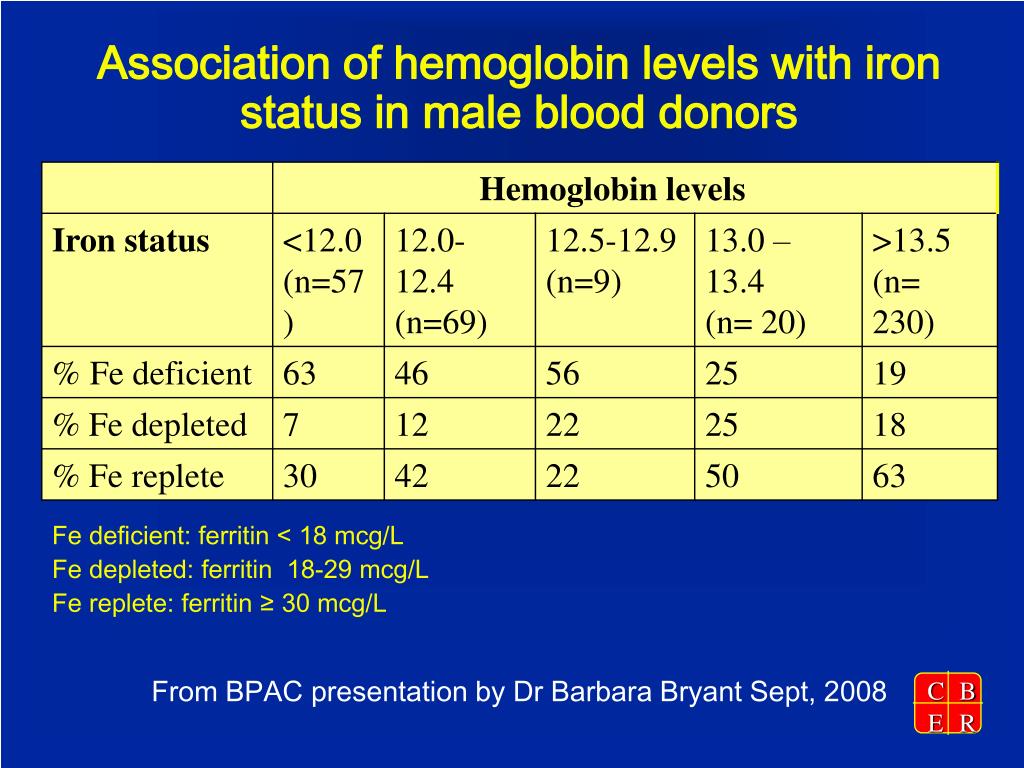
Hematocrit in Clinical Practice: Beyond the Numbers
Hematocrit testing plays a crucial role in various clinical scenarios:
1. Diagnosing Anemia
Low hematocrit levels, along with decreased hemoglobin, are key indicators of anemia. The test helps determine the severity and guide treatment decisions.
2. Monitoring Chronic Conditions
Patients with kidney disease, cancer, or chronic inflammatory disorders often undergo regular hematocrit testing to assess disease progression and treatment efficacy.
3. Evaluating Blood Loss
In cases of suspected internal bleeding or during surgical procedures, hematocrit levels help quantify blood loss and inform transfusion decisions.
4. Assessing Hydration Status
Hematocrit can provide insights into a patient’s hydration level, which is particularly important in cases of severe dehydration or overhydration.
5. Sports Medicine
Athletes, especially those in endurance sports, may have their hematocrit levels monitored to ensure optimal performance and detect any potential blood doping.

How do clinicians use hematocrit results in conjunction with other tests? Hematocrit is often interpreted alongside other blood parameters, such as red blood cell count, hemoglobin, and mean corpuscular volume (MCV), to provide a comprehensive assessment of a patient’s hematological status.
Hematocrit and Technology: Advancements in Testing and Monitoring
The field of hematology continues to evolve, with new technologies enhancing the accuracy and accessibility of hematocrit testing:
1. Point-of-Care Testing
Portable devices now allow for rapid hematocrit measurement in various settings, from emergency rooms to remote clinics.
2. Continuous Monitoring
Emerging technologies aim to provide real-time hematocrit monitoring in critical care settings, allowing for more responsive patient management.
3. AI-Assisted Analysis
Artificial intelligence algorithms are being developed to improve the accuracy of automated hematocrit calculations and flag potential abnormalities.
4. Home Testing Kits
While not yet widely available, research is ongoing to develop reliable home testing kits for hematocrit and other blood parameters.

How might these advancements impact patient care in the future? Improved accessibility and real-time monitoring could lead to earlier detection of blood disorders, more personalized treatment plans, and better outcomes for patients with chronic conditions affecting their hematocrit levels.
Maintaining Healthy Hematocrit Levels: Lifestyle and Dietary Considerations
While some factors affecting hematocrit are beyond our control, there are steps you can take to support healthy red blood cell production and maintenance:
1. Balanced Diet
Consume foods rich in iron, folate, and vitamins B12 and B6, which are essential for red blood cell production. Good sources include:
- Lean meats and fish
- Leafy green vegetables
- Legumes and beans
- Fortified cereals
2. Hydration
Maintain proper hydration to prevent artificial elevation of hematocrit due to dehydration.
3. Regular Exercise
Engage in moderate physical activity to support overall cardiovascular health and stimulate healthy red blood cell production.
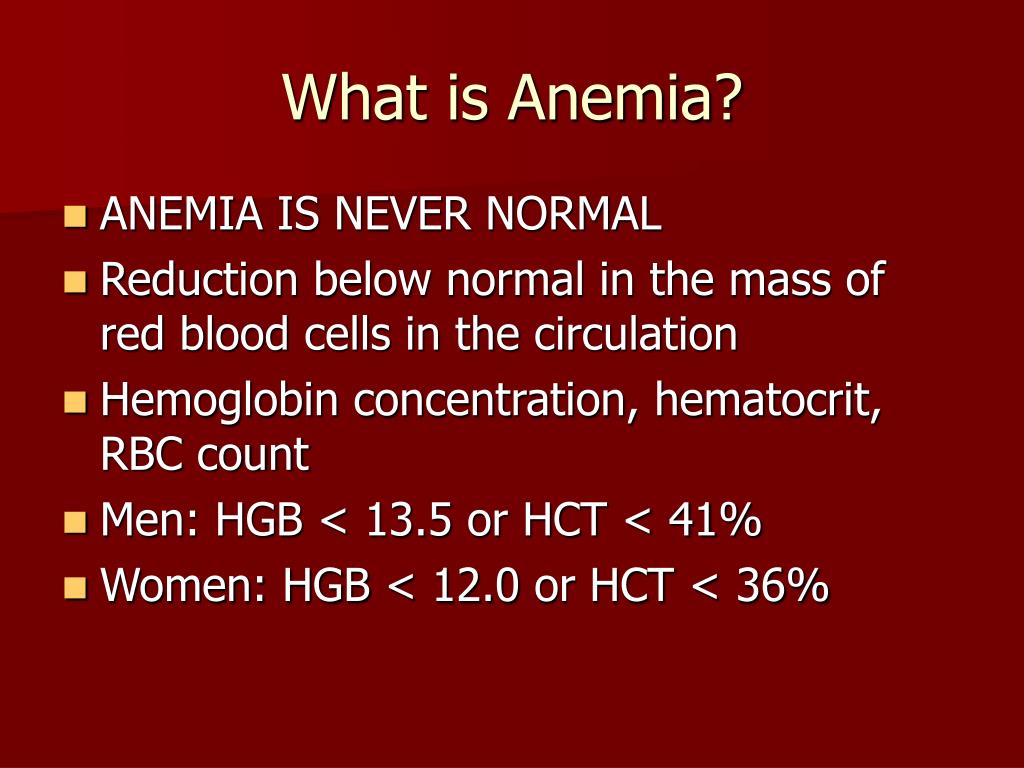
4. Avoid Smoking
Quitting smoking can help normalize hematocrit levels and improve overall oxygen delivery to tissues.
5. Manage Chronic Conditions
If you have conditions that affect hematocrit, such as kidney disease or sleep apnea, work closely with your healthcare provider to manage them effectively.
Can dietary supplements help maintain healthy hematocrit levels? In some cases, your doctor may recommend iron or vitamin supplements to support red blood cell production. However, it’s crucial to consult with a healthcare professional before starting any supplementation regimen, as excessive intake of certain nutrients can be harmful.
Understanding and monitoring your hematocrit levels is an important aspect of maintaining overall health. By staying informed about this vital blood parameter and making positive lifestyle choices, you can support your body’s oxygen-carrying capacity and promote optimal wellness.
Hematocrit | Sight Diagnostics
Definition, Test, Low vs High Levels and Causes
What is hematocrit
Hematocrit (HCT) is the calculated volume percentage of red blood cells (erythrocytes) in your blood. Hematocrit is also called packed cell volume (PCV) or erythrocyte volume fraction.
Human blood contains red blood cells, white blood cells, and platelets suspended in a liquid called plasma. The word hematocrit means to separate blood. In a hematocrit test, the red blood cells are separated from the rest of your blood cells and plasma.
Hematocrit is important because red blood cells are essential to your survival. They contain a vital protein component called hemoglobin that binds to oxygen, which fuels all the cells in your body.
When red blood cells pass through your lungs, they bind to and transport oxygen to various cells in your body. On their way back to your lungs, they carry carbon dioxide to be exhaled. Hematocrit is a significant measurement as it can identify whether you have sufficient red blood cells for oxygen transportation and delivery.
If your doctor suspects that you have a blood disorder such as anemia or polycythemia (too many red blood cells), your doctor may order a hematocrit test to check your red blood cells.
How to measure hematocrit with a test?
The original method for hematocrit measurement is the macrohematocrit (Wintrobe hematocrit tube) method.
It uses a narrow glass tube and a centrifuge machine. The centrifuge separates the blood into three main layers: red blood cells, white blood cells, and platelets, in that order from the bottom up. At the very top, there’s a small layer of blood plasma. The macrohematocrit method carries the risk of measuring trapped plasma as part of the red blood cell layer, which erroneously elevates the hematocrit percentage.[1]
A newer method is the microhematocrit method, which uses a capillary tube instead of a narrow glass tube and requires a smaller quantity of blood and less time. The microhematocrit method traps less plasma because the diameter of the capillary tube is smaller than the Wintrobe hematocrit tube. So the percentage of hematocrit is more accurate in the microhematocrit method than in the macrohematocrit method.[1:1]
So the percentage of hematocrit is more accurate in the microhematocrit method than in the macrohematocrit method.[1:1]
Both procedures require the technician to manually measure the length of the layers. The technician calculates hematocrit as the length of the packed red blood cell layer divided by the length of total cells and plasma. This ratio is then multiplied by 100 to give a certain percentage.
Today, these two methods have been largely succeeded by an automated hematology analyzer where the hematocrit test is obtained as part of a complete blood count (CBC) laboratory test. The hematocrit is calculated indirectly from the average volume and the number of red blood cells.[2] The automated analyzer is the fastest method. However, automated analyzers may not be available in areas where resources are low.
In the microhematocrit method, a technician only needs a small sample of blood from a finger-prick. In the other methods, the technician draws blood from the inner side of your arm or the back of your hand. Before drawing blood for the measurement, the technician first cleans the surface from where your blood would be drawn. Next, using a needle, the technician draws your blood. Afterward, the technician covers the surface with gauze and a bandage.
Before drawing blood for the measurement, the technician first cleans the surface from where your blood would be drawn. Next, using a needle, the technician draws your blood. Afterward, the technician covers the surface with gauze and a bandage.
What is a normal hematocrit level?
Due to differences in age and gender, the normal hematocrit is a range. Hematocrit results are reported as a percentage. The average hematocrit measurement for human beings is 45%, which means that the red cell volume contains 45 mL per 100 mL of blood.[3]
According to the Cleveland clinic, the general normal ranges for hematocrit are[4]:
- Male: 41% to 50%
- Female: 36% to 44%
- Newborn: 45% to 61%
- Infant: 32% to 42%
What does it mean if your hematocrit is high?
If your hematocrit is high, it means that you have more red blood cells than is considered healthy.
High hematocrit may be caused by [4:1]:
- Heart disease
- Dehydration
- Scarring or thickening of the lungs
- Bone marrow disease
- Obstructive sleep apnea
- Smoking and chronic obstructive pulmonary disease (COPD)
- Carbon monoxide poisoning
- Testosterone use
A false high hematocrit may be reported if the patient has cryoproteins, significant leukocytosis, or giant platelets. Hematocrit measurement is critically high if it is greater than 67% (>67%).
Hematocrit measurement is critically high if it is greater than 67% (>67%).
What does it mean if your hematocrit is low?
If your hematocrit is low, it means that you have fewer red blood cells than is considered healthy.
Low hematocrit may be caused by[4:2]:
- Blood loss
- Leukemia or other bone marrow problems
- Iron and vitamin deficiency, including folate, vitamin B12, and vitamin B6
- Too much water in the body
- Kidney disease
- Thyroid abnormality
- Immune destruction of red blood cells
A false low hematocrit may be reported if the patient has microcytosis, in vitro hemolysis, or autoagglutinins. Hematocrit is considered critically low if it falls below 21% (<21%).
How to increase hematocrit?
In some cases, hematocrit is caused because of low iron levels. You can eat iron-rich foods and take a daily vitamin supplement to help prevent low hematocrit causes.
Food sources that are rich in iron include:
- Red meat
- Beef liver
- Chicken liver
- Fish and shellfish
- Soy products (tofu and edamame)
- Dried fruit
- Green leafy vegetables
- Nuts
- Beans
- Iron-fortified bread and cereals
- Eggs
Additionally, vitamin C helps with iron absorption.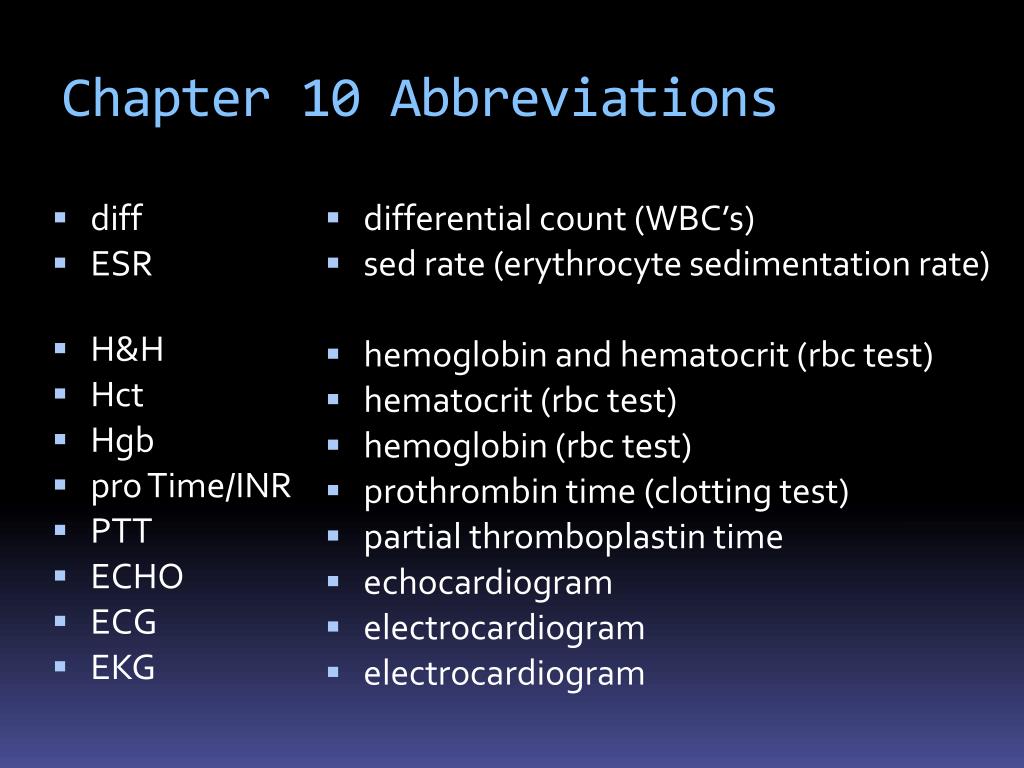 Therefore, also eat various foods that are rich in vitamin C, for example, citrus fruits. Do not drink coffee or tea with your meals because this decreases iron absorption.
Therefore, also eat various foods that are rich in vitamin C, for example, citrus fruits. Do not drink coffee or tea with your meals because this decreases iron absorption.
Discover Sight’s Automated Hematology Analyzer
Related posts
Giant Platelets
Eosinophils
Cyclic Neutropenia
Hematrocit Blood Test – Testing.com
Test Quick Guide
Blood is made up of red blood cells (RBC), white blood cells (WBC), and platelets which are suspended in a liquid called plasma. A hematocrit (HCT) lab test determines the percentage of the blood that is composed of RBC.
An HCT test helps your medical provider screen for, diagnose, and monitor conditions that affect your blood or bone marrow. A measurement of HCT is routinely included in a complete blood count (CBC) but may also be ordered on its own if your provider suspects a condition affecting your RBC.
About the Test
Purpose of the test
The purpose of an HCT test is to evaluate the percentage of blood that is made up of RBC. This measurement indicates the viscosity, or thickness, of the blood and depends on the size and number of RBCs in a blood sample. HCT is most often evaluated as part of a CBC, which also includes measurements of RBC, WBC, platelets, and hemoglobin.
This measurement indicates the viscosity, or thickness, of the blood and depends on the size and number of RBCs in a blood sample. HCT is most often evaluated as part of a CBC, which also includes measurements of RBC, WBC, platelets, and hemoglobin.
Often ordered during a routine medical check-up, a CBC is a common lab test. A CBC that includes HCT may also be ordered to evaluate the cause of certain symptoms, monitor patients receiving medical treatments, and track those with chronic health issues that affect the blood.
What does the test measure?
HCT measures the proportion of the blood that is composed of RBC and is expressed as a percentage.
RBCs are critical for the distribution of oxygen to the body’s cells. Once oxygen is used by cells to produce energy, RBCs transport the waste product, carbon dioxide, from the cells back to the lungs.
HCT levels can be affected by an increase or decrease in the number of RBCs and by changes in other components of the blood. Because HCT measures the percentage of RBC in the blood, relative increases or decreases in other blood components, like plasma or WBC, can lead to abnormal HCT results even if the RBC count is normal.
Because HCT measures the percentage of RBC in the blood, relative increases or decreases in other blood components, like plasma or WBC, can lead to abnormal HCT results even if the RBC count is normal.
When should I get this test?
Your provider may test HCT as part of a CBC or if you are experiencing symptoms of an RBC disorder such as anemia. Indications for testing HCT include:
- Fatigue
- Moodiness
- Headaches
- Brain fog or difficulty concentrating
- Heavy menstrual flow
- Poor nutrition
- Blood in your stools or vomit
- Cancer and cancer treatment
- Excessive diarrhea or vomit
- Leukemia or other conditions associated with bone marrow
- Chronic health conditions, including kidney diseases
Finding an HCT Test
How can I get an HCT test?
An HCT test requires a sample of blood and is typically ordered by a doctor. A blood draw, also called venipuncture, is conducted by a health provider or a laboratory technician in a medical setting.
Can I take the test at home?
HCT testing is not usually performed at home. Conducting this test requires specialized tools and trained laboratory personnel.
How much does the test cost?
The cost of an HCT test depends on several factors, including other tests performed at the same time and whether or not you have health insurance or are paying out-of-pocket. The cost of HCT testing is often covered by insurance due to the routine nature of the test.
Refer to your health care provider, medical facility, or insurance company for specific details on costs, copays, and deductibles.
Taking an HCT Test
A blood sample is needed for HCT testing. To collect a blood sample, a needle is inserted into your arm and a vial, also known as a vacutainer, is placed on the provider’s end of the needle. The vial is then filled with blood that is used to test your hematocrit.
Before the test
There is no special preparation needed prior to an HCT test, unless specified by your provider.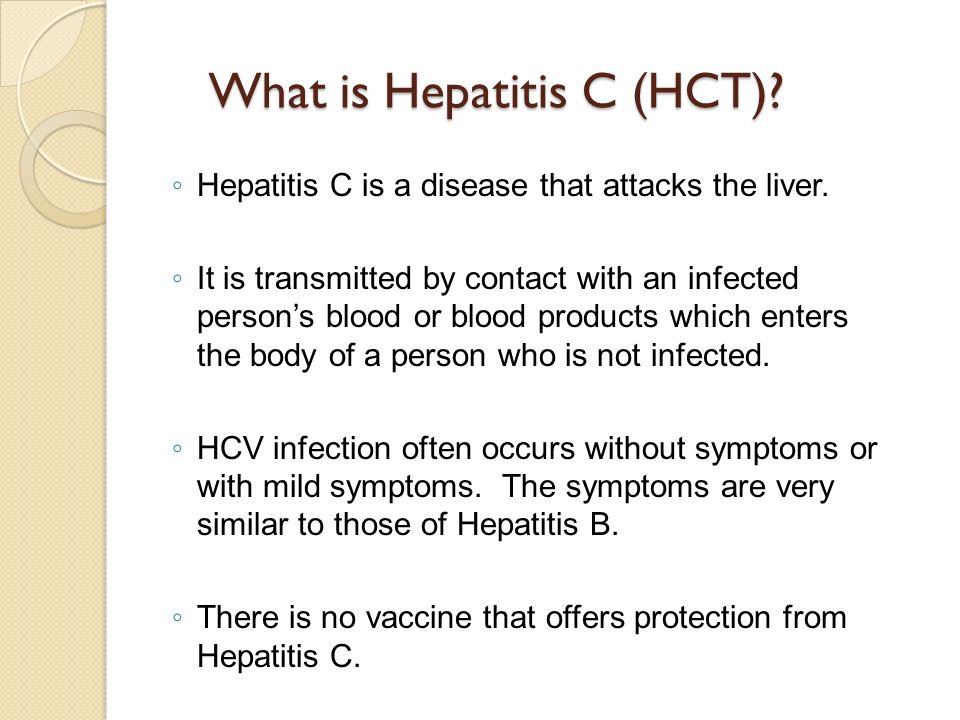
During the test
Blood draws are a common medical procedure. Usually, blood is drawn from either the top of the hand or the vein on the inside of the elbow. To conduct a blood draw:
- An antiseptic wipe is used to cleanse the area prior to the blood draw.
- A band is placed around your arm to increase pressure in your vein, making your vein more visible and easier to access.
- A needle is placed in your vein and a test tube is attached to the needle and filled with blood.
- If you are getting other blood tests in addition to an HCT test you may have more than one vial of blood drawn.
After the test
Once the blood is drawn, the nurse or phlebotomist may ask you to hold pressure on the site of the venipuncture with a cotton swab for a few minutes. They may place a bandage on the cotton swab to maintain pressure.
After any blood draw, you will want to watch out for temporary side effects such as dizziness or lightheadedness. Your provider may want you to stay seated for a few minutes until they can determine that you are safe to get up and walk or drive.
Your provider may want you to stay seated for a few minutes until they can determine that you are safe to get up and walk or drive.
Other than possible lightheadedness and bruising at the site where blood was drawn, there are few potential side effects from a blood draw.
HCT Test Results
Receiving test results
After the test is complete, results will be sent to your doctor for interpretation. HCT test results are most often part of the results of a CBC, which may be available to your doctor within a few minutes or up to several days.
Interpreting test results
HCT test results depend on several factors, including age and sex. The cutoff values for a normal test result, called its reference range, may also vary depending on the laboratory or methods used to conduct the test. Because of the many factors that affect HCT, it’s important to talk to a doctor for support in understanding your test result.
The reference ranges listed below describe common reference ranges for hematocrit:
Hematocrit Reference Ranges for Adults
| Sex | Reference Range |
|---|---|
| Male | 42% to 50% |
| Female | 37% to 47% |
An abnormal HCT level can indicate that your blood is either too thin or too thick compared to an average person of a similar population.
An abnormally low level of HCT indicates that your cells may not be getting enough oxygen, a condition known as anemia. Abnormally low HCT may be related to a variety of causes, including:
- Loss of blood
- Poor nutrition with low intake of iron, vitamin B6, vitamin B12 or folate
- Bone marrow disorders or cancers such as leukemia, lymphoma, multiple myeloma, or other cancers that spread to the marrow
- Destruction of RBCs
- Excessive water in the body
High HCT levels indicate conditions where there is either an overproduction of RBC or an abnormally high concentration of RBCs in your body. Some examples of causes of a high HCT include:
- Dehydration
- Lung disease
- Congenital heart disease
- Heart failure
- Certain types of kidney tumors
- Smoking
- Living at high altitudes
- Secondary polycythemia, a rare group of blood disorders caused by heritable changes to genes involved in the production of RBCs causing the body to produce too many RBCs
- Polycythemia vera, a rare blood disease in which the body produces too many RBCs
Although the results are accurate, laboratory parameters and provider reference ranges as well as personal variables may be subject to differences.
Abnormal HCT test results may or may not require additional follow-up testing. HCT is often evaluated alongside other components of a CBC to look for signs of disease or monitor health conditions.
For example, a doctor may order additional testing if you have low HCT to evaluate the cause of anemia. Testing for anemia may include a reticulocyte count, a renal panel, a liver panel, hemolysis testing, or a blood smear.
Follow-up testing is based on your symptoms, medical history, and the results of other tests. For questions about follow-up testing, speak with your doctor.
Talking with your doctor can help you understand your HCT result and any next steps. You may wish to ask the following questions:
- What does my result mean for my health?
- Is there anything I can do to change my HCT levels?
- Is there any further testing that needs to be done based on my HCT levels?
Resources
- CBC Blood Test (Complete Blood Count)
Learn More - Red Blood Cell Count (RBC) Test
Learn More - Hemoglobin Blood Test
Learn More - White Blood Cell Count (WBC Blood Test)
Learn More - Platelet Count (PLT) Blood Test
Learn More - Blood Smear
Learn More - Iron Test
Learn More - National Heart, Lung, and Blood Institute: Anemia
Learn More - National Heart, Lung and Blood Institute: Thalassemias
Learn More
Sources
See More
See Less
Take Control of Your Health
This website uses cookies to ensure you get the best experience on our website.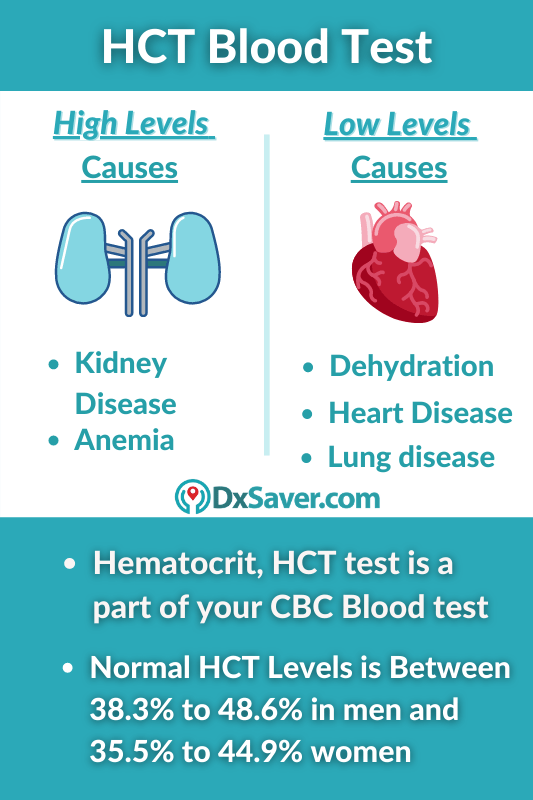
I Accept
CD74HCT4060E, IC: Digital, Binary Counter, THT, DIP16, HCT, 4.5~5.5VDC, Texas Instruments
Electronic Components Store
The basket is waiting
Choose any offer
- Main
- About us
- Delivery
- Payment
- Contacts
Offer catalog
- AC-DC Converters, Off-Line Switches
- DC-DC Converters
- ADC
- IC for household REA
- IC for video image processing
- IC for telecommunications
- IC for telephony
- Programmable logic IC
- Standard logic IC
- Interfaces RS-232
- Sensor and detector interfaces
- Other interfaces
- Reference voltage sources
- Interface codecs
- Switching controllers
- Comparators
- Controllers Capacitive Touch, Proximity
- Lamp Ballast Controllers (Lighting Controllers)
- Power controllers and monitors
- Interface Controllers
- Power Factor Correction Controllers (PFC Controllers)
- Logic – FIFO memory
- Logic – Buffers, Drivers, Receivers, Transceivers
- Logic – Valves and Inverters
- Logic – Generators and Parity Checkers
- Logic – Comparators
- Logic – Multivibrators
- Logic – Signal Switches, Multiplexers, Decoders
- Logic – Level converters
- Logic – Shift registers
- Logic – Latch Registers
- Logic – Counters, Dividers
- Logic – Triggers
- Microcontrollers
- microprocessor circuits
- Chips Analog Front End (AFE)
- Chips for laptop repair
- Battery charging and monitoring ICs
- Chips counters
- Multiplexers
- Power Distribution Switches, Load Drivers
- Signal converters
- Programmable timers and generators
- Other microcircuits imported
- RF transceivers
- I/O port expanders
- Synthesizers of sound melodies
- Specialized microcontrollers
- Voltage and current stabilizers
- Supervisors
- Electricity meters
- Clock buffers, drivers
- Clock generators, PLL systems, frequency synthesizers
- Low Frequency Amplifiers
- Other amplifiers
- Current sense amplifiers
- Amplifiers – Instrumentation, Operational, Buffer
- Power supply control devices
- Filters
- DAC
- Digital Computational Synthesizers (DDS)
- Digital potentiometers
- Digital Signal Processors (DSP)
- Real time clock, timers
- PWM controllers
- Main
- Logic – Counters, Dividers
-
240 - Discount 31%
x
165 RUB
- Information
Semiconductors\ICs\Logic ICs\Counters/DividersICs, Counters Hi-Sp CMOS 14-Stage Binary w/Oscillator
| Mounting Style | Through Hole |
| +/- 4 mA | |
| Operating temperature range | 55 C to + 125 C |
| Product category | ICs, meters |
| Digits | 14 bit |
| Maximum operating temperature | + 125 C 90 192 |
| Minimum operating temperature | 55 C |
| Subcategory | Counter ICs |
| Counting sequence | Up |
| Operating supply voltage | 4. 5 V to 5.5 V 5 V to 5.5 V |
| Factory packing size | 25 |
| Logic family | HCT |
| Series | |
| Product type | Counter ICs |
| Counter type | Binary |
| Trademark | Texas Instruments |
| Pack | Tube |
| Pack/box | PDIP-16 |
| Function | Counter |
| Weight, g | 0.96 |
- CD40192BE, IC: digital, up/down counter, CMOS, THT, DIP16, CD4000
- 74F163A, IC: digital, 4bit, binary counter, THT, DIP16, F 0
Main pages
Contact information
Electronic components store © 2014 – 2023
LLC “Impulse”.This information resource is not a public offer. The availability and cost of goods please call. Manufacturers reserve the right to change the specifications and appearance of products without prior notice.

2; CMOS,TTL; HCT; SMD; tube manufactured by NEXPERIA 74HCT393PW.112
out of stock
on request
Request
You can request any quantity of 74HCT39 from us3PW,112, just send us a request for delivery.
We work with individuals and legal entities.74HCT393PW.112 description and specifications
74HCT393PW112 IC: digital; 4bit, binary counter; Ch: 2; CMOS,TTL; HCT; SMD; tuba
Manufacturer
NEXPERIA
Assembly
SMD
Housing
TSSOP16
Series
HCT
Type of packaging
tuba
Chip type
digital
Type of chip
4bit
Type of chip
binary counter
Number of channels
2
Weight
0.
 052g
052g
Free shipping
We will deliver directly to your hands or to the nearest collection point
Related products
WLSK200
Tool: vacuum gripper; SMD
from 21 120 ₽
+3168 points
More details
UMSMD428
Board: universal; layout; printed circuit boards
from 21 120 ₽
+3168 points
More details
EL.VAMPIRE-ESD
Tool: vacuum gripper; SMD; L: 150mm; Ø: 14mm; ESD
from 21 120 ₽
+3168 points
More details
P-830
Tool: vacuum gripper
from 21 120 ₽
+3168 points
More details
RE933
Board: universal; transitional; W: 58.9mm; L: 120.1mm
from 21 120 ₽
+3168 points
More details
SVP 100
Tool: vacuum gripper; SMD; L: 150mm; Ø: 14mm; ESD
from 21 120 ₽
+3168 points
More details
PR2035E/5R
Adhesive for SMD elements; syringe; 10ml
on request
More
SMD-EXT
Tool: chip extractor; SMD
on request
More
EL.
 VAMP-MINI
VAMP-MINITool: vacuum gripper; SMD; L: 70mm; Ø: 13mm; ESD
on request
More
EL.VAMPIRE-540
Tool: vacuum gripper; SMD; L: 150mm; Ø: 15mm
on request
Read more
Similar items
NTE74LS90
IC: digital; decade counter; TTL; THT; DIP14
from 1 209 ₽
+45338 points
More details
NTE74LS193
IC: digital; TTL; THT; DIP16
from 430 ₽
+16125 points
Read more
CD74HC93E
IC: digital; binary counter; THT; DIP14; HC; 2÷6VDC
from 236 ₽
+3540 points
Read more
CD4033BE
IC: digital; divider, decade counter; CMOS; THT; DIP16; CD4000
from 206 ₽
+7725 points
Details
74HC4020DB,112
IC: digital; 14bit, binary counter; CMOS; SMD; SSOP16; HC; 2÷6VDC
from 79 ₽
+1849 points
Details
SN74F163AD
IC: digital; 4bit, binary counter, synchronous; Series: F; THT
from 191 ₽
+14325 points
More
CD4520BE
IC: digital; binary direct counting counter; Ch: 2; CMOS; THT
from 67 ₽
+5025 points
More details
74HC595D(BJ)
IC: digital; shift register,latch; C²MOS; HC; SMD; SO16; 2÷6VDC
from 48 ₽
+7200 points
More details
CD74AC163M
IC: digital; 4bit, binary counter, synchronous; SMD; SO16; AC
from 185 ₽
+6938 points
More details
CD4029BE
IC: digital; up/down counter, preset; CMOS; THT
from 127 ₽
+9525 points
More
MC74HC163ADG
IC: digital; Ch: 1; IN: 9; CMOS; HC; SMD; SOIC16; HC; 2÷6VDC; tuba
from 94 ₽
+6091 points
More details
SN74LS593N
IC: digital; binary counter, register; Ch: 8; THT; DIP20; 74LS
from 2 806 ₽
+10523 points
More details
Your request has been sent.
 In the near future we will contact you at the specified contacts.
In the near future we will contact you at the specified contacts.20800078
Enclosure, Accessory, Coding Pegs Delivery time 3-4 weeks
Congratulations! You got free shipping on your order!
Place an order
The quantity ordered is not a multiple. The correct amount must be a multiple of .
Enter your mobile phone number
By clicking on the “Receive SMS with registration code” button, you accept the terms of the user agreement.
Enter your mobile phone number
By clicking on the “Receive SMS with access code” button, you accept the terms of the user agreement.
Enter your mobile phone number
By clicking on the “Receive SMS with access code” button, you accept the terms of the user agreement.
Enter your mobile phone number
By clicking on the “Receive SMS with access code” button, you accept the terms of the user agreement.
Save profile
Data saved!
It will be impossible to undo the deletion
Enter the title
The entry starts on the line
12
A preview of your file is displayed below.



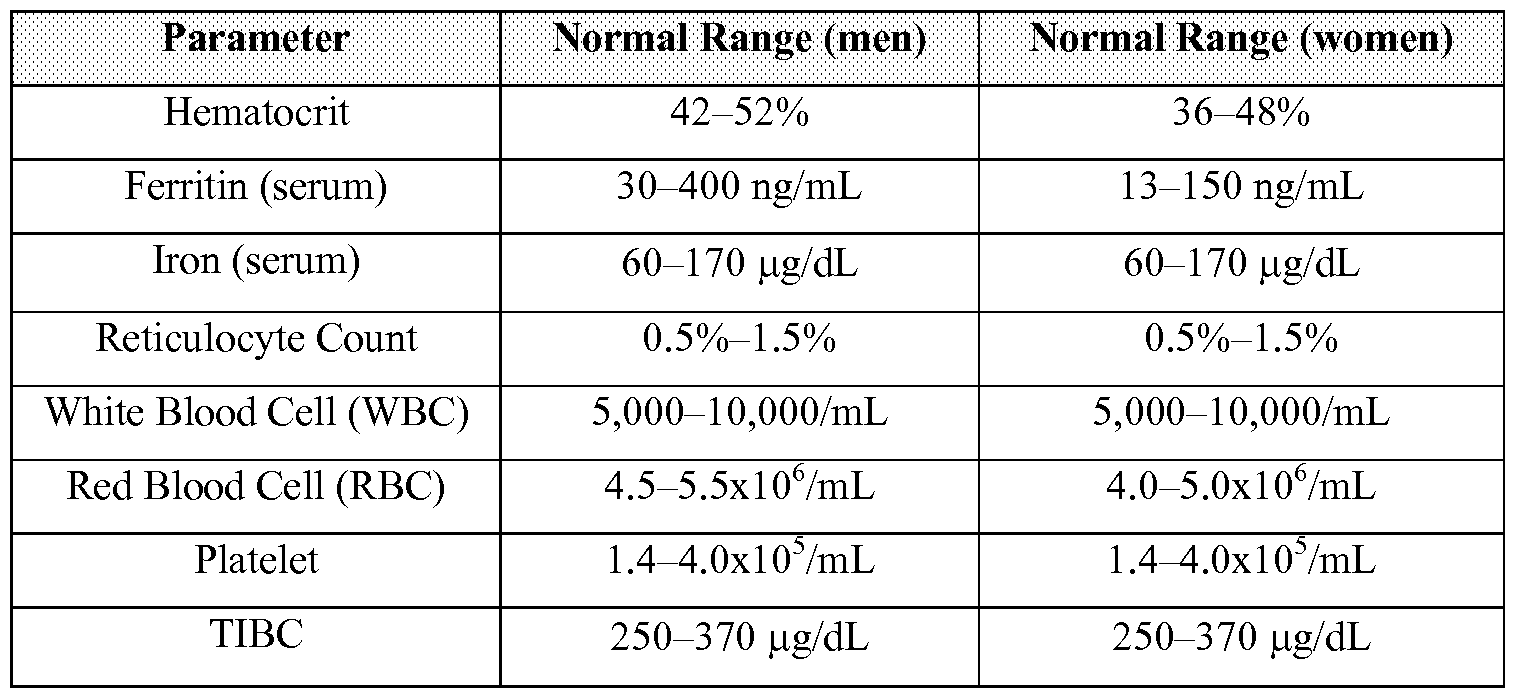 052g
052g VAMP-MINI
VAMP-MINI In the near future we will contact you at the specified contacts.
In the near future we will contact you at the specified contacts.